People have used the fig tree for many years to treat eczema, constipation, diarrhea, diabetes, and even high cholesterol. The leaves also feature in some recipes as a wrap for rice and vegetables. Fig trees have been popular for thousands of years, and as a consequence, they can be found in most parts of the world.
Fig trees produce fruit all year and are an important food source to bats, monkeys, and thousands of other animals in the rain forest.
Figs contain fiber, calcium, minerals, vitamins, and different antioxidants. You can eat them dehydrated or fresh to get their benefits or just to enjoy their flavor. Below are 13 types of fig trees you can conveniently grow.
Table of Contents
1. Adriatic Fig

Well known for its high sugar content and Mediterranean origin, the fruit of this variety is used chiefly in fig bars and fig pastes. When fresh, the skin is light green with light pink flesh.
The Adriatic fig tree is self-pollinating and has a fruit that is sweet, thinned-skinned, and tasty. The tree can also withstand different climatic conditions. Fruit that ripens in June is produced on the preceding year’s growth and that in August comes from the present year’s growth.
2. Celeste Fig
Known for its unique and hardy appeal, the Celeste fig tree can withstand low temperatures of 15 degrees or less. It is widely found within the Southeastern region of the United States and produces both fruits and small flowers. Celeste figs are rich in sugar, making them one of the sweetest known figs.
The figs usually start out as green and ultimately assume a brown-purplish shade when ripe. It is an excellent choice for those planning to plant figs since it is self-fertile.
Because of this, it does not need cross-pollination, meaning cultivators only need a single fig tree instead of two different ones for fruit production.
The Celeste fig tree attains a medium-size height, growing up to 10 feet tall. This, however, depends on where you choose to have it. It will be shorter when you plant it in containers or pots.
3. Common Fig
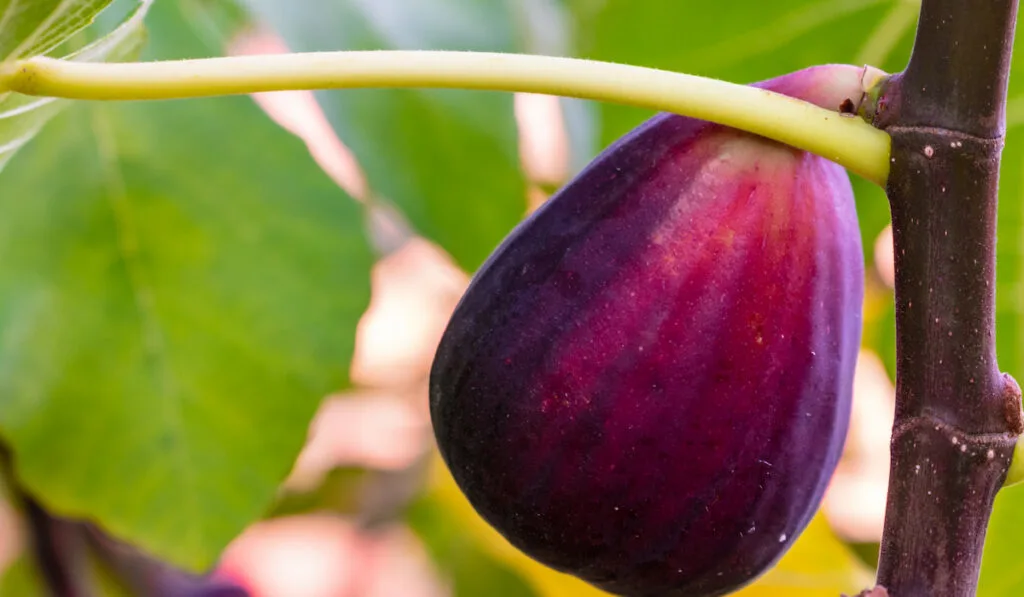
Just like its name implies, this is the most common type of fig tree. It is prevalent within the United States, where it is grown in home gardens and institutions. The distinctive feature of this fig tree is the fact that it does not have any proper seeds. And thus, it does not need fertilization.
Its figs are resistant to insect attacks and are not prone to rotting since they do not have an opening that allows water to penetrate. The common fig is, therefore, the longest-lasting variety of fig.
4. Brown Turkey Fig
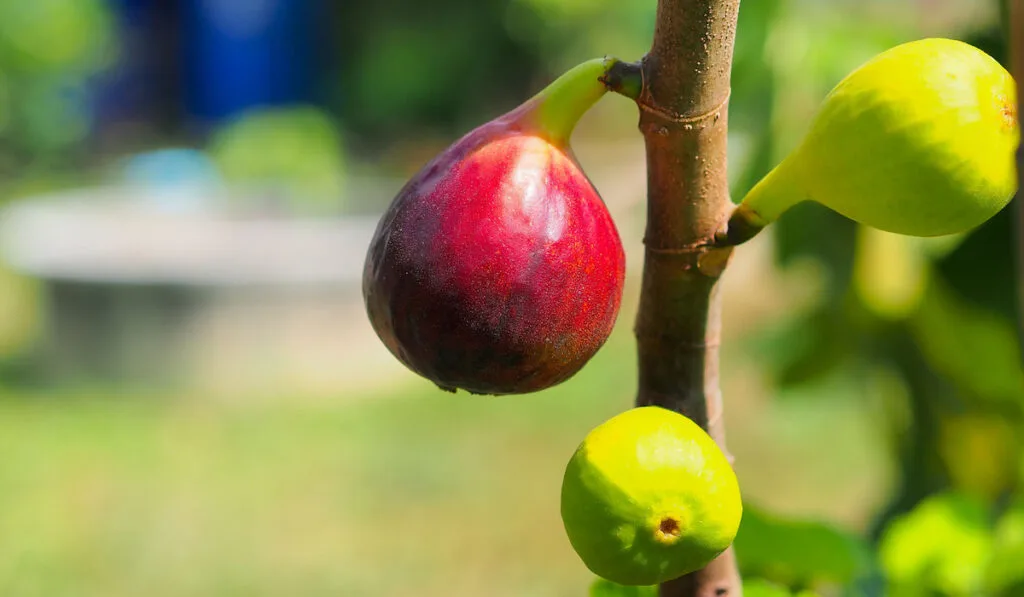
Brown Turkey fig trees have a moderate growth rate that reaches 10 to 20 feet wide and tall. They are highly praised for their foliage and fruit, but not their blooms.
What makes the Brown Turkey fig stand out is its deep purplish skin with red flesh. They can either be sold dried or fresh, with their fruits maturing in the late summer or early fall.
5. The Weeping Fig
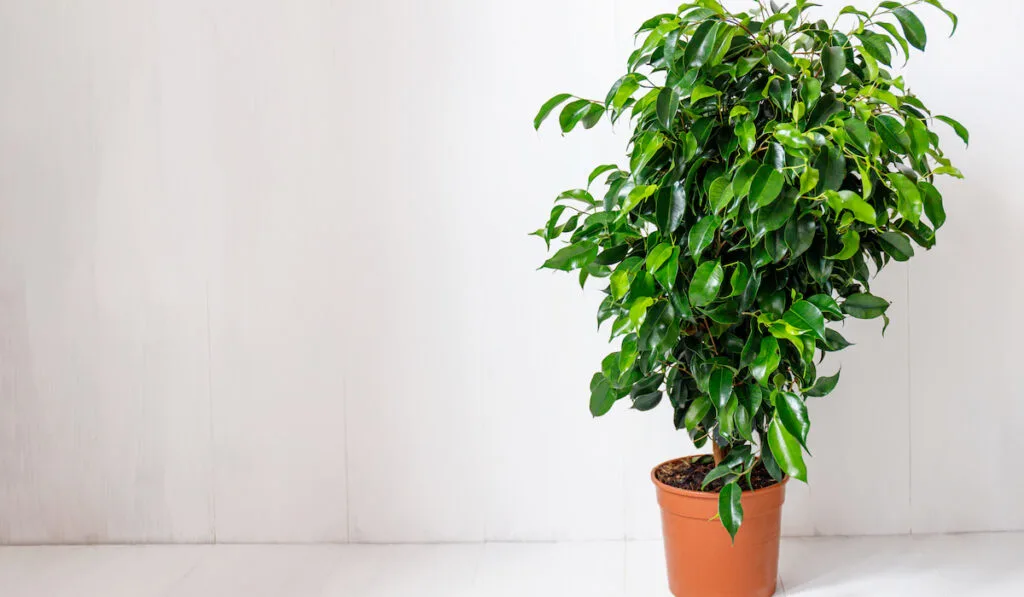
Weeping figs mainly do well in mild climatic conditions. They are therefore best kept as houseplants.
However, they can also do well outdoors, especially if your region has a cool temperate climate. They are well known for their evergreen leaves, making them perfect plants grown as trees or shrubs in ideal locations.
The weeping fig tree produces creamy yellowish flowers that ultimately develop into small red figs. When grown outdoors, they can produce fruits twice every year. They also tend to be smaller when grown in a home garden compared to their native regions, where they can reach 50 feet.
6. Caprifig Fig (Ficus caprica)

This fig tree, also known as the wild fig, grows well in native Southern parts of Asia. Caprifigs do not produce fruit like other fig trees. Instead, it produces only the male flowers that are pollinators for Smyrna figs.
The first unique feature you will notice when you look at them is their small flower clusters that appear fruitlike. These flowers become thickened and resemble the shape of a pear with time. Caprigfigs are inedible and have a dry, spongy structure with tough skin. They ripen three times a year.
7. The Creeping Fig Plant/ Climbing Fig
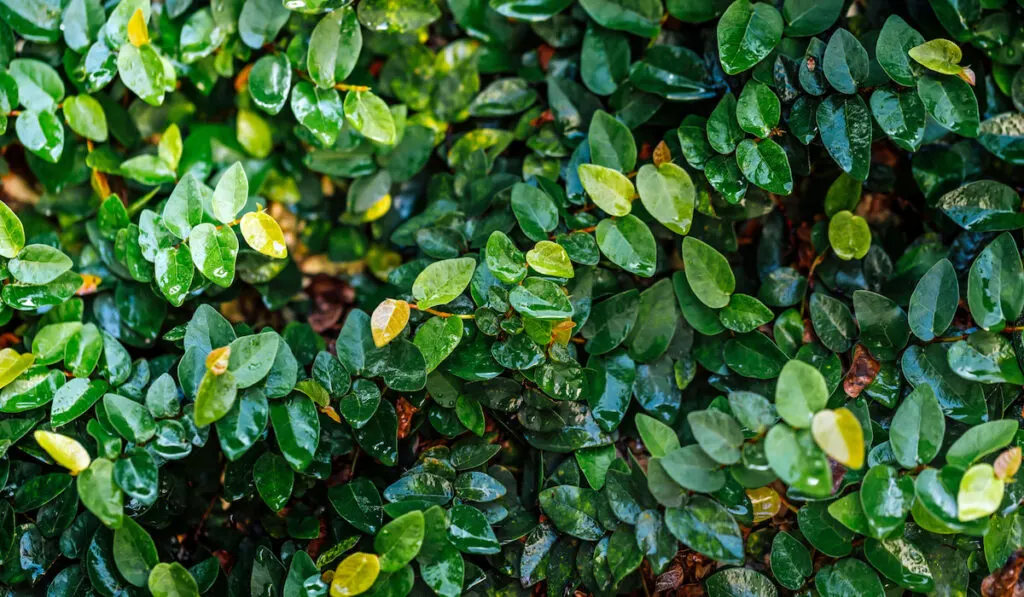
Popularly known as topical ivy or climbing plant, the creeping fig can cover everything it comes across, including walls and fences, with the help of its aerial rootlets. You must have seen them covering walls and attaching very firmly to the walls. The climbing fig’s hardy rootlets help in ensuring the plant’s firm grasp onto its chosen substrate.
Due to their dynamic growth, creeping figs can become invasive, especially if you do not prune them. You must ensure you keep a keen eye on this plant as it can end up covering or destroying other trees within its proximity.
8. Chicago Hardy Tree
Even though this fig tree might not be famous like Celeste or the common fig, it is still considered as one of the hardiest fig trees. Its branches can tolerate low temperatures of up to 10 degrees Fahrenheit, with the roots withstanding temperatures between 10 to 20 degrees Fahrenheit.
Insulating the roots of a Chicago hardy fig tree with heavy layers of mulch ensures that even though it might not hold well in the colder seasons, it can recover during spring.
The Chicago Hardy figs also produce fruits twice every year. The main crop is produced in the early fall months, while small crops are produced in spring. The Chicago Hardy’s fruits are famous for their soft and sweet skin and serve as the best specimen to plant in a garden.
9. Purple Genca Fig Tree
Purple Gencas, also known as Black Spanish, are perfect figs for home garden fanatics and commercial farmers.
They are self-fertilizing and are widely known for their sweet reddish flesh, making them the best figs for making jam.
Purple Genca figs also feature dark purplish skin and have a large size.
10. Smyrna Fig
A Smyrna fig bears only female flowers, and for it to bear fruits, it has to be fertilized by a Caprifig. They are considered perfect as quick and healthy snacks. If the flowers are not pollinated, the fruits will fall before they are fully developed. Fig growers usually place Caprifigs near a Smyrna tree to ensure proper pollination takes place.
Smyrna figs have a yellowish-green hue when fresh and soft golden skin, with a nut-like flavor when dry. For this reason, most people prefer to consume them dry.
11. Kadota Fig
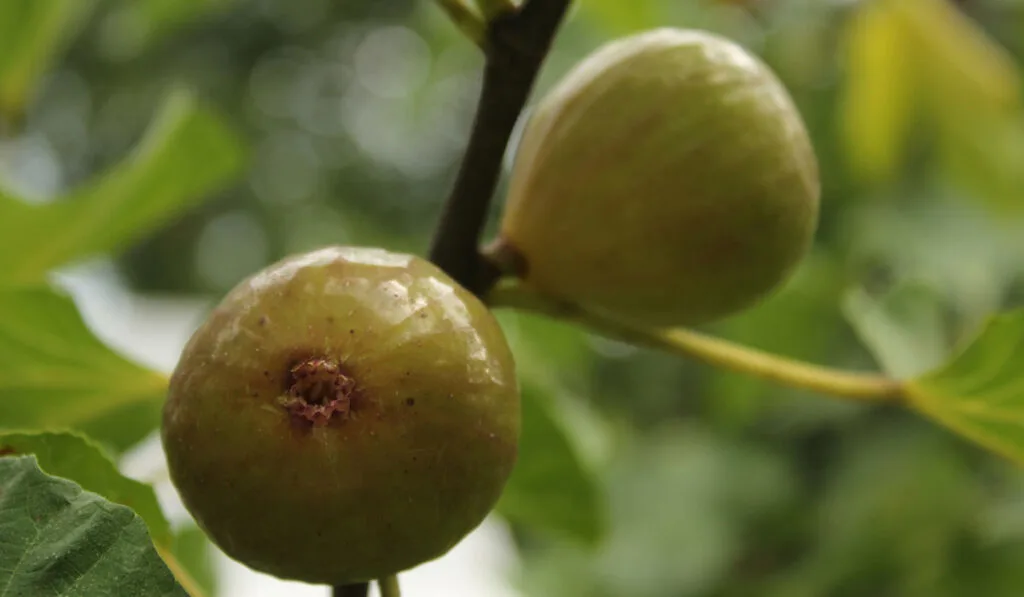
Do you want a fig tree that will grow tall and provide some shade? Well, the Kadota fig plant should be your first choice. The tree grows up to 25 feet and the fruit has incredible skin. It has a yellowish-green tone blended with a purplish pulp.
It is a hardy type as its figs are seedless and can withstand cold. Kadota figs also can adapt well when adequately sheltered, and when the fruits dry, they assume a golden hue, which is why they are considered the most attractive fig plant.
12. Black Mission Fig

The Black Mission fig tree has its origin in California and is considered to have the most high-quality fruits. Its name is derived from the missionaries who were the first people to plant it. The fruits have dark purple skin, that turns black when you dry them.
13. Alma Fig
The Alma tree is native to Mexico. From the onset, you may find this fig tree to be less attractive, but the fruit is deliciously rich with a yellowish hue and tiny seeds. You can choose to eat the figs while raw or make jam out of them.
The tree is highly susceptible to frost and snow. Thus won’t fare well when winter kicks in. If you grow it in containers, bring it inside before the threat of frost.
Final Thoughts
Fig trees are one of nature’s blessings to humankind and animals as well. You can plant them in your garden to enjoy fresh figs twice a year. When it comes to growing them, ensure you plant them in the appropriate regions.
You should also consider planting them in containers and keeping them indoors, especially if your area experiences extreme cold. To get the best fig trees for your region, visit your local nursery to learn which ones are best suited for your climate.
